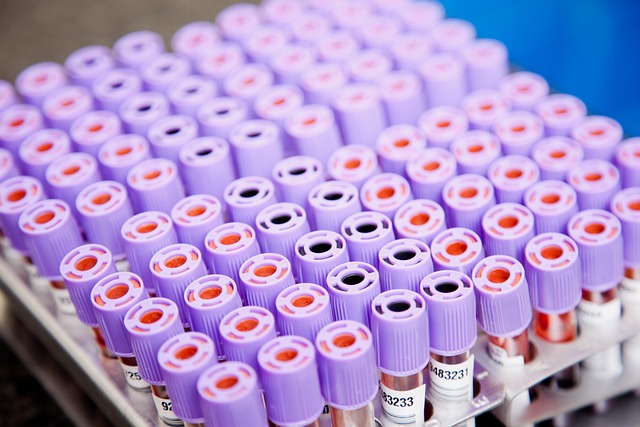Optimizing imaging and pathology workflows for faster diagnoses
Faster and more reliable diagnoses depend on tight coordination between imaging, pathology, and clinical teams. Cancer hospitals can reduce delay by streamlining sample handling, standardizing reporting, and using digital tools to share images and results quickly. This article examines practical workflow changes to improve diagnostic speed while maintaining accuracy.

This article is for informational purposes only and should not be considered medical advice. Please consult a qualified healthcare professional for personalized guidance and treatment.
Imaging and diagnostics integration
Integrating imaging systems with diagnostic pathways reduces time to diagnosis by collapsing handoffs and preventing repeat tests. Standardized protocols for imaging requests, structured reporting templates, and shared imaging repositories help radiology and oncology teams access relevant prior studies quickly. Embedding decision support into picture archiving and communication systems (PACS) can flag urgent findings and route them to clinical teams. When imaging is harmonized with diagnostics, multidisciplinary teams can convene earlier, enabling faster triage for biopsy, surgery, or systemic therapy without sacrificing interpretive quality.
Pathology workflows and laboratory quality
Optimizing pathology begins with specimen logistics: clear labeling, prioritized transport, and specimen tracking minimize delays. Standard operating procedures for fixation, block preparation, and immunohistochemistry reduce turnaround variability, while centralized lab information systems allow pathologists to view clinical context alongside slides. Digital pathology and whole-slide imaging support remote review and concurrent case review by subspecialists, speeding sign-out for complex cases. Regular quality audits and metrics such as turnaround time and re‑cut rates help laboratories monitor performance and target improvement efforts.
Telemedicine, referrals, and navigation
Telemedicine complements faster workflows by enabling rapid consults between radiologists, pathologists, and treating clinicians, especially when subspecialty input is needed. Virtual tumor boards and e-referrals reduce scheduling bottlenecks and support faster decision-making for diagnostic follow-up. Patient navigation systems that manage referrals, appointments, and pre-procedure instructions can decrease no-shows and accelerate the diagnostic timeline. Integrating electronic referral pathways with clinical trials databases also helps identify research options earlier, linking diagnostics to enrollment opportunities.
Coordinating treatment: surgery, chemotherapy, and immunotherapy
Efficient diagnostic workflows directly affect treatment planning for surgery, chemotherapy, and immunotherapy. Faster pathology and molecular testing enable timely staging and biomarker-driven therapy selection. Clear communication channels between diagnostic teams and surgical schedulers prevent delays when operative intervention is required; similarly, early coordination with infusion centers ensures systemic therapy can start promptly once results are available. Embedding protocols for urgent findings and establishing rapid consult slots improve alignment between diagnostics and therapeutic pathways while maintaining patient safety and informed decision-making.
Workforce, survivorship, and palliative care
Workforce planning is crucial to sustain faster diagnostics: adequate staffing, cross-training, and protected time for case review reduce bottlenecks. Investing in training for new digital tools and standardized reporting supports consistent quality across teams. Faster diagnoses also influence survivorship and palliative planning—earlier clarity about prognosis allows earlier integration of survivorship planning and palliative services when appropriate, improving coordination across the continuum of care. Ongoing measurement of outcomes and patient experience helps refine workforce deployment and service design.
| Provider Name | Services Offered | Key Features/Benefits |
|---|---|---|
| Memorial Sloan Kettering Cancer Center | Comprehensive oncology diagnostics, pathology, radiology, molecular testing | Multidisciplinary tumor boards, integrated diagnostic and treatment services |
| MD Anderson Cancer Center | Advanced imaging, pathology, clinical trials coordination | High-volume subspecialty expertise, research-linked diagnostic pathways |
| Mayo Clinic Cancer Center | Diagnostic imaging, pathology, molecular diagnostics, patient navigation | Integrated EHR and diagnostic data sharing, coordinated referrals |
Conclusion
Faster diagnoses in cancer care arise from aligning imaging and pathology workflows with coordinated clinical processes. Practical steps include standardizing specimen handling, adopting digital pathology and PACS integrations, expanding telemedicine for consultations, and strengthening referral and navigation systems. Sustained improvements require attention to workforce capacity, quality measurement, and communication pathways so that accelerated diagnostics translate into timely, appropriate treatment and better patient journeys.






